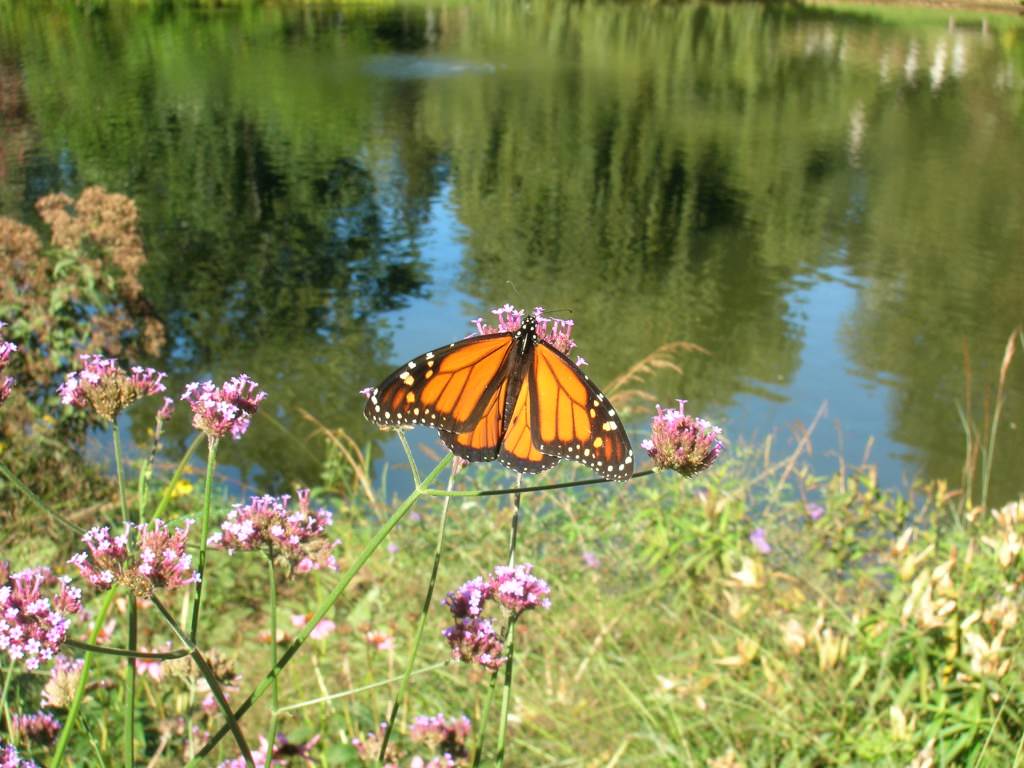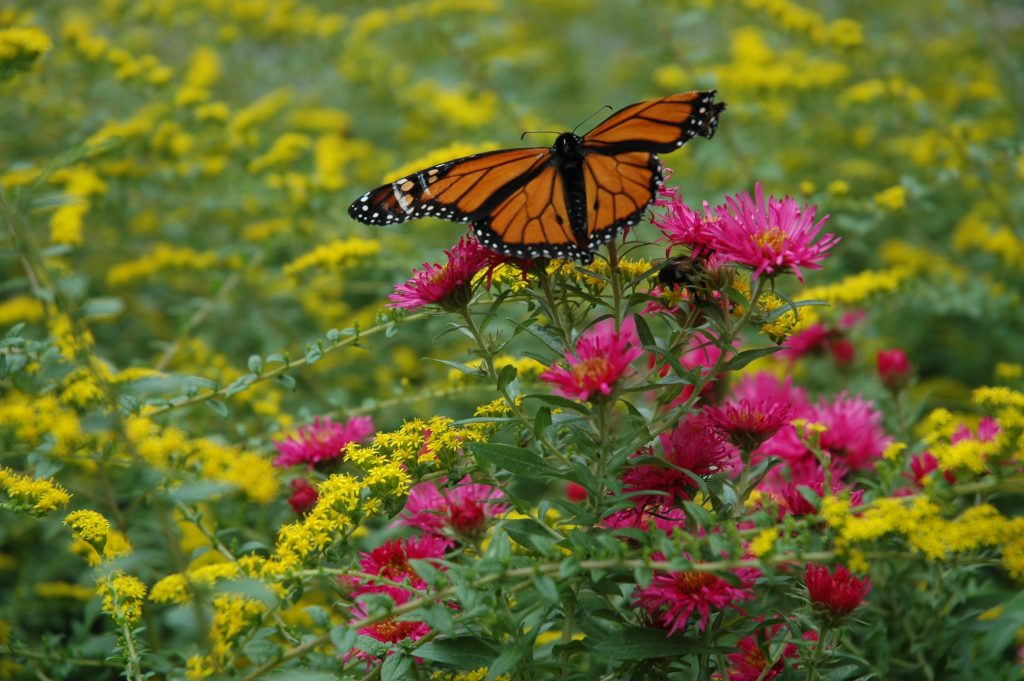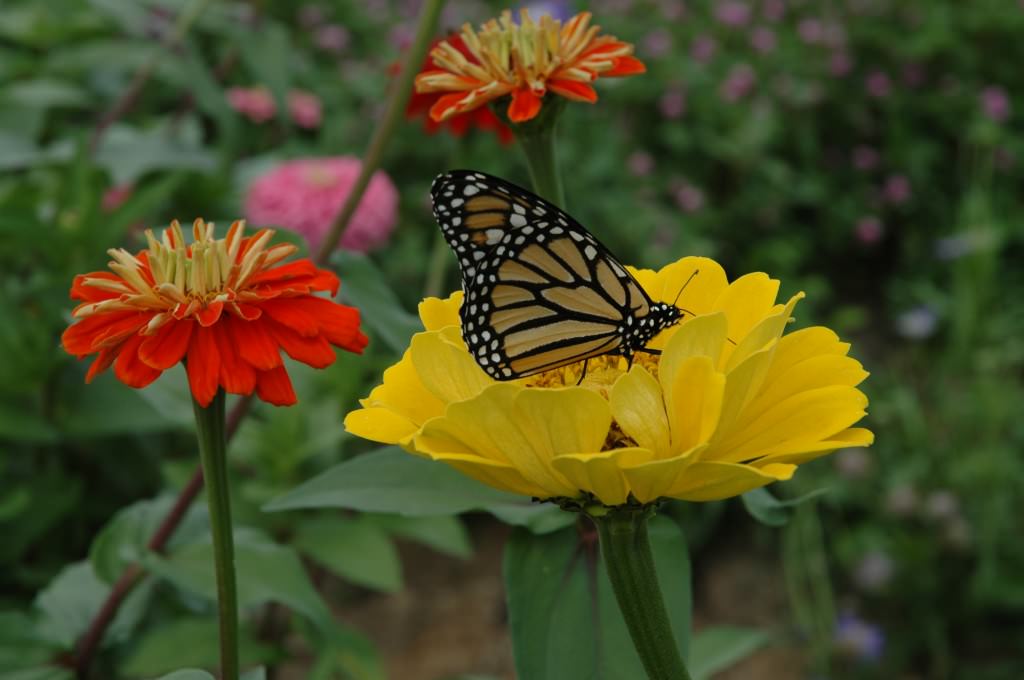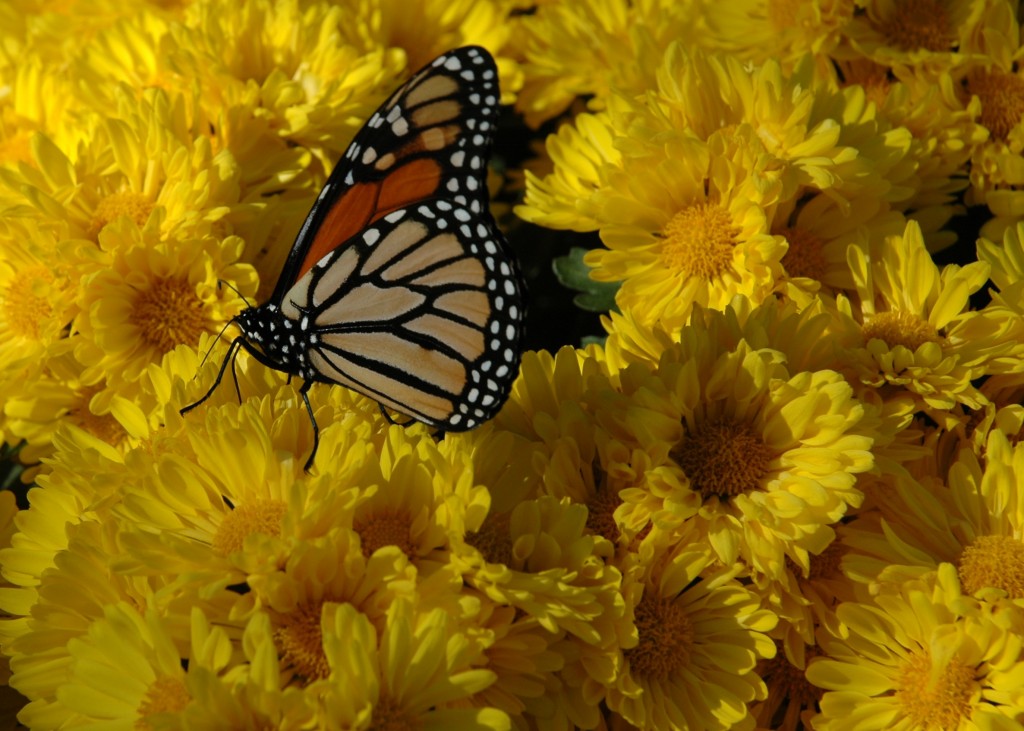Horticulture Highlight: Milkweed

…Now soon the monarchs will be drifting south,
and then the geese will go, then one day
the little garden birds will not be here…
-Howard Nemerov
Recently while at the Wildflower Meadow & Pollinator Habitat surrounding our Washington Tower, we lingered to contemplate a Milkweed, Asclepias syriaca, and how passing time has brought a more positive opinion towards this one time commonly dismissed “weed”. Today, increased public knowledge that milkweeds serve as preferred food for the caterpillars of monarch butterflies (Danaus plexippus), has turned countless former opponents into its protectors and even planters.
The genus Asclepias comprises 200 species of herbaceous, perennials within North America, South America and Africa. Carl Linnaeus (1707-1778), Swedish botanist and father of modern botany, formally described and named the genus after Asclepius, the Greek god of medicine/healing, and Apollo’s son. Syriaca means from Syria, but while this is native from New Brunswick to Saskatchewan, New England south to Georgia and Tennessee and west to Iowa and Kansas, it had already been introduced to Europe from America, leading to Linnaeus’ mistake. The common name milkweed alludes to the white, milky sap within its vascular system.
Generally reaching 3-4 feet tall (sometimes taller), it has a stout, hollow, unbranched stem. The opposite, 4–8- inch-long leaves have a prominent whitish, mid-vein and entire (smooth) margins.
From late June to early August the purplish/pink to white, fragrant flowers occur in globe-like clusters (umbels) at the end of stems and next to the upper leaves and are important nectar sources for native bees and other insects. When successfully fertilized, they will produce a grayish-green, 2–5- inch-long, teardrop-shaped pods. In early autumn the pods split open releasing up to 200 flat, black seeds, each attached to a soft silky white hair that assists with wind dispersal.
Someone tore this milkweed pod asunder
To find the wet white silk within, and plunder…
-Elizabeth Bohm
There is a long history of human uses of milkweed. English herbalist John Gerard (1545-1612) cited various Native American edible/healing uses in his popular 17th-century Herbal (1597).
Jacob Bigelow (1787-1879), physician, botanist and Mount Auburn’s visionary founder wrote in his 1817, American Medical Botany, “…The down of different species of Asclepias is useful and ornamental…it has been substituted for fur, in the manufacture of hats, and for the feathers in beds and cushions. When attached by its ends to any woven fabric, this down forms a beautiful imitation of the finest and softest of fur skins, and is applicable to various purposes of dress.”
Jump ahead 190-years where contemporary author, botanist, Peter Del Tredici in his 2010, Wild Urban Plants of the Northeast recounts, “During World War II, the silky seed hairs were used as a substitute for kapok to fill “Mae West” life vests. Between 1943 and 1945, a million such flotation devices were filled with the floss from some 24 million pounds (111 million kg) of milkweed pods.”
I drift into the sound of wind,
how small my life must be
to fit into his palm like that, holly
leaf, bluejay feather, milkweed fluff,…
-Reginald Shepherd
Any contemplation of milkweeds’ connection with monarch butterflies includes the stunning facts of their thousands of miles migrations from Mount Auburn to the mountains of Mexico. A web travel check shows 2800 miles from Mount Auburn to the small town of Tlalpujahua, Mexico, near the winter stay of monarchs leaving our area this autumn.

…Today, the summer gone, four monarch butterflies,
their breed’s survivors, sucked a flower’s last blooms,
opened their wings, orange-and-black stained glass.
and printed on the sky in zigzag lines…
-Grace Schulman
Just since 1975 has the wider world learned of the preference of some overwintering colonies of monarchs finding oyamel fir trees (Abies religiosa) at elevations of 7,900’ to 11,800’ where they live out their winters, resting and eventually mating. In 1986 the Mexican government created the Monarch Butterfly Biosphere Reserve of 139,000-acres after public outcry to logging within the area.
…You are an oyamel native to the mountains of Mexico
Rising in a cloud forest of sister evergreens
Shedding pollen cones, shedding winged seeds…
-Karen An-Hwei Lee

Even more astonishing is the spring monarch return migration that needs multiple generations to accomplish the same distance of miles. The very monarchs which for the first time in their lives flew from Mount Auburn and points as far north as southern Canada to the oyamel forests begin flying north again. Within Texas and/or Louisiana they mate, females lay eggs on local milkweed species, then die, upon hatching the larva feed on its needed milkweed leaves, metamorphosing within a chrysalis into adults they then continue the northward journey. After three or four similar short-lived generations, over several months, the great or great, great grandchildren of last year’s local monarchs lay eggs for a “super generation” which will live long enough to accomplish the same long migration next year. Much speculation exists about how all of this is accomplished, a true natural mystery.
Every butterfly knows that the end
is different from the beginning
and that it is always a part
of a longer story, in which we are always
transformed…
-Stuart Kestenbaum

It should come with little surprise that there are now butterfly watchers as there are bird watchers. There is the Monarch Watch, Texas Monarch Watch, Cape May Monarch Monitoring and Massachusetts Butterfly Club to mention just a few. Within these there have been established tagging studies resulting in data collection. Steve Haydock in a 2002 Massachusetts Wildlife article, cited a monarch that had traveled 3,244 miles. A small sticky-backed numbered tag was attached to the underside of a hindwing and added approximately 0.01 grams to the average monarch weight of 0.41 grams.
If all this makes you want to visit Mount Auburn (or your own neighborhood) to take a moment and appreciate some milkweed and/or monarchs, we can empathize with you.

…The monarchs agitate
over their upcoming trip…little leather-wings,
more torqued up than crows or any
of the birds miniature thrusts…
-Felda Brown Jackson













Leave a Reply